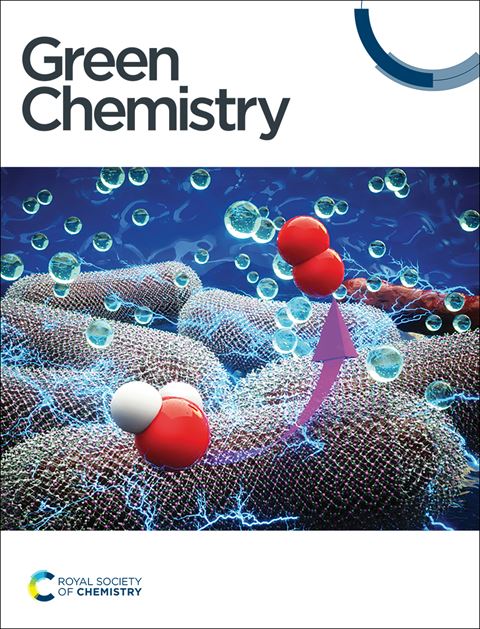Harnessing borane-potassium cooperativity for sulfurated ring-opening copolymerisation†
IF 9.3
1区 化学
Q1 CHEMISTRY, MULTIDISCIPLINARY
引用次数: 0
Abstract
Sulfur-containing polymers, such as thioesters and thiocarbonates, can exhibit improved thermal properties and degradability compared to their all-oxygen analogues, yet their synthesis remains challenging. In this respect, ring-opening copolymerization (ROCOP) offers access to sulfur-containing polymers; however, the catalysts used for this process often rely on toxic, expensive or synthetically complex components. Here, we demonstrate that combining commercial borane Lewis acids with easily accessible potassium acetate crown ether complexes highly selectively mediates the ring-opening copolymerization of oxetanes with a wide range of sulfur-containing monomers. Mechanistic investigations clearly indicate a cooperative mode of action between boron and potassium, yielding high-melting, semicrystalline materials that exhibit improved thermal stability compared to those generated via chromium catalysis. Our study establishes new concepts in cooperative catalysis to produce sustainable materials that are otherwise difficult to access.

与全氧类似物相比,硫代酯和硫代碳酸酯等含硫聚合物具有更好的热性能和降解性,但其合成仍然具有挑战性。在这方面,开环共聚(ROCOP)提供了获得含硫聚合物的途径;然而,该工艺使用的催化剂通常依赖于有毒、昂贵或合成复杂的成分。在此,我们证明了将商用硼烷路易斯酸与易于获得的醋酸钾冠醚络合物相结合,可高度选择性地介导氧杂环丁烷与多种含硫单体的开环共聚。机理研究清楚地表明了硼和钾之间的合作作用模式,与通过铬催化产生的材料相比,这种高熔点半晶体材料具有更高的热稳定性。我们的研究确立了合作催化的新概念,以生产可持续材料,否则很难获得这些材料。
本文章由计算机程序翻译,如有差异,请以英文原文为准。
求助全文
约1分钟内获得全文
求助全文
来源期刊

Green Chemistry
化学-化学综合
CiteScore
16.10
自引率
7.10%
发文量
677
审稿时长
1.4 months
期刊介绍:
Green Chemistry is a journal that provides a unique forum for the publication of innovative research on the development of alternative green and sustainable technologies. The scope of Green Chemistry is based on the definition proposed by Anastas and Warner (Green Chemistry: Theory and Practice, P T Anastas and J C Warner, Oxford University Press, Oxford, 1998), which defines green chemistry as the utilisation of a set of principles that reduces or eliminates the use or generation of hazardous substances in the design, manufacture and application of chemical products. Green Chemistry aims to reduce the environmental impact of the chemical enterprise by developing a technology base that is inherently non-toxic to living things and the environment. The journal welcomes submissions on all aspects of research relating to this endeavor and publishes original and significant cutting-edge research that is likely to be of wide general appeal. For a work to be published, it must present a significant advance in green chemistry, including a comparison with existing methods and a demonstration of advantages over those methods.
 求助内容:
求助内容: 应助结果提醒方式:
应助结果提醒方式:


